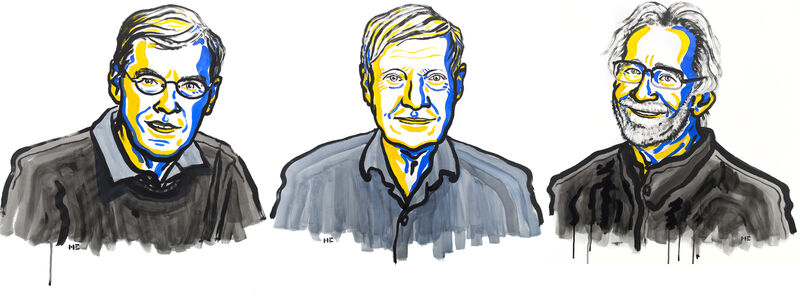
- Research
- 04/10/2017
Nobel Prize Chemistry for 3D imaging of frozen biomolecules
This year the Nobel Prize for Chemistry has been awarded to the founders of cryo-electron microscopy, a technique used to determine the structure of biomolecules in their natural form. The winners are the Swiss Jacques Dubochet, the American Joachim Frank and Britain's Richard Henderson. Colleague in the field and TU/e professor Nico Sommerdijk says the distinction is highly deserved.
Professor Nico Sommerdijk is the scientific director of the Center for Multiscale Electron Microscopy at TU/e. He says he is elated to see the Nobel Prize awarded within his specialist field. “It is also very well-deserved; these three gentlemen are the undisputed founders of this field.”
The field of cryo-electron microscopy emerged, believes Sommerdijk, with the discovery by Dubochet that by freezing samples containing biomolecules – such as proteins - quickly, they can be preserved in their original state in a form that allows inspection with electron microscopes. “This made it possible to produce the first high-resolution images of biological materials. But you can also use the technique to analyze synthetic materials, as we do here in the lab.”
Joachim Frank, the second Nobel Prize winner, took Dubochet's discovery further, explains Sommerdijk. “He was a pioneer in the field of single-particle reconstruction; if you have a sample with a large number of identical molecules, in all kinds of orientations, you can derive a 3D image of that molecule. Both Frank and Henderson made significant contributions to the visualization of proteins in three dimensions.”
In addition, Henderson was also able to achieve such high resolutions that you can recognize all the individual amino acids from which the proteins are built, says Sommerdijk. This makes it possible, he explains, to see how the long chain of amino acids is 'folded' to form a functional protein. He stresses what a great step forward this was. “Until the discovery of cryo-electron microscopy, you could only say something about the structure of the proteins by using X-ray diffraction, for which the protein is crystallized. But many proteins don't want to crystallize, and certainly not in their natural form. And you want to know that form in order to establish how proteins interact with other molecules. This knowledge is important, for example, in the development of medicines.”
Discussion